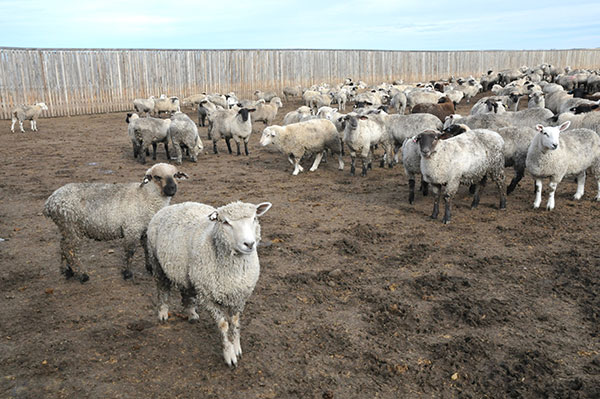Live animal testing technologies such as genotyping for resistance to scrapie and RAMALT (rectal biopsy) scrapie testing may be used in the SFCP. Genotyping may be used to; determine if purchased rams may co-mingle with ewes (Section 3.8), determine if a flock is eligible to waive the annual sampling minimum (Section 4.5 c), determine eligible sheep for RAMALT testing where the alternative live animal sampling protocol is used (Section 4.5 d)

Genotyping
Genotyping results will be recognized from samples (e.g. blood samples) taken by a veterinarian accredited to deliver the SFCP or a third party under the supervision of a veterinarian accredited to deliver the SFCP (e.g. a technician) and tested at a laboratory approved by the CFIA or a CFIA laboratory. Approved identifiers are required on sheep being genotyped and the official identification number (15 digits) included with the sample submission.
The genotype of 136AA 171RR breeding rams must be determined twice: by using a combination of predictive parentage and testing by a laboratory approved by the CFIA, or a combination of testing at any laboratory and at a laboratory approved by the CFIA. Genotype results with only codon 171 for those animals determined to be 171RR are considered acceptable. This is due to the knowledge that R cannot be found at site 171 in combination with V at site 136 (V at site 136 is linked with Q at site 171).
Accordance between the results of the two separate determinations of genotype is required. In cases of discordance, a separate sample will be taken from the animal and submitted to the CFIA lab for determination of the genotype.
Genotyping two different tissues (blood, hair follicle or buccal swab) should be considered especially for confirming genotype in 136AA 171QR animals due to the phenomenon of blood chimerism. There are limitations of the standard blood sample in this rare situation of a chimeric animal.
RAMALT (rectal biopsy) Testing
This procedure is a live animal screening test for scrapie. It has lower sensitivity than brain and/or lymph node testing, but may used in the SFCP in certain circumstances. It is may be used when humanely destroying an animal to meet the annual sampling requirement will have a significant impact on the flock or herd due to its small size. The Alternative Live Animal Sampling Protocol is described in section 4.5 of the SFCP. RAMALT sampling may also be used to meet the minimum sampling requirement to advance to certified plus status in the SFCP (see section 5). For accredited veterinarians interested in learning the technique, click the following link for instructions (RAMALT procedure)




